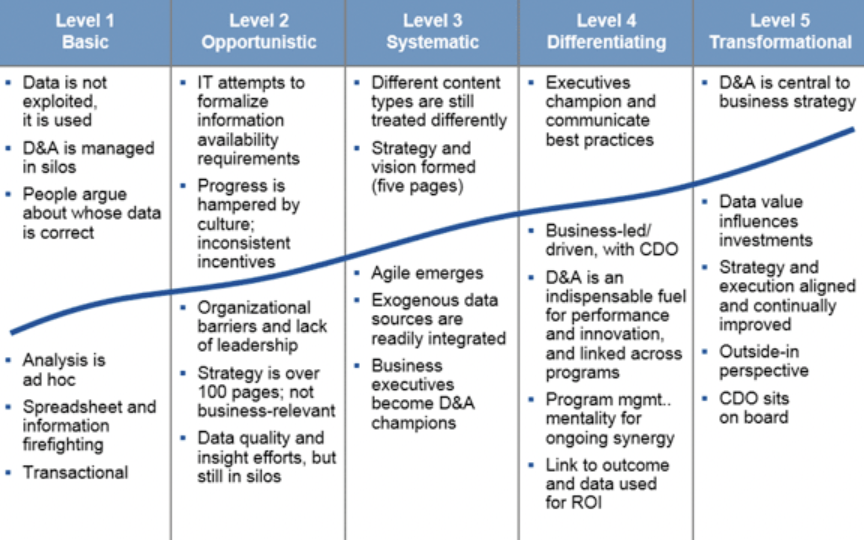When Data Turns Against You: How Quickly Assets Become Liabilities
TLDR
While data has the potential to be a significant asset, unmanaged data growth can quickly transform it into a liability. The challenges of handling data in wrong formats, incompatible systems, or inaccessible silos are substantial and can lead to increased costs, legal risks, and operational inefficiencies.
In today’s digital landscape, data is often hailed as the “new oil,” a critical asset that fuels innovation, enhances customer experiences, and drives strategic decision-making. Organizations are collecting data at unprecedented rates—over 2.5 quintillion bytes of data are created every day. However, this rapid data accumulation can quickly turn from an asset into a liability, especially when data is stored in wrong formats, incompatible systems, or becomes inaccessible. The effort required to undo and fix these issues is often significant, posing operational, financial, and legal challenges.
With data collection, ‘the sooner, the better’ is always the best answer.
Marissa Mayer
In this post, we’ll delve into how data growth, if not properly managed, can become a liability. We’ll explore the complications arising from data stored in wrong formats or systems and the difficulties in rectifying these problems.

*A zettabye is 1 billion terrabytes or a trillion gigabytes. Remember the old 256 gigabyte storage your desktop – ha!
The Exponential Growth of Data Collection
Unstructured and Incompatible Data Formats
As organizations collect data from various sources—social media, IoT devices, customer interactions—the diversity of data formats increases.
- Unstructured Data: Approximately 80% of the world’s data is unstructured, including text, images, videos, and social media posts. This data is challenging to organize and analyze using traditional databases.
- Incompatible Systems: Companies often use multiple systems that don’t communicate effectively. For instance, customer data might be split between CRM software, email marketing tools, and e-commerce platforms, each using different data schemas.
How Data in Wrong Formats Becomes a Liability
Increased Storage and Maintenance Costs
Storing vast amounts of poorly formatted or redundant data increases costs.
- Duplicate Data: Without proper data governance, duplicate records can consume significant storage space.
- Maintenance Overhead: Managing and securing unnecessary or incompatible data requires additional resources, including specialized personnel and software tools.
Legal and Compliance Risks
Data that is improperly formatted or stored can lead to compliance violations.
- Regulatory Non-Compliance: Regulations like GDPR and CCPA require organizations to manage data appropriately. Failure to locate or erase specific data upon request can result in hefty fines.
- Audit Failures: Inaccessible or disorganized data can lead to failed audits, damaging reputations and financial standing.
Data Breaches and Security Threats
Disorganized data environments are more vulnerable to security breaches.
- Hidden Vulnerabilities: Unmanaged data repositories might not receive necessary security updates.
- Expanded Attack Surface: More data in more places increases the number of potential entry points for cybercriminals.
The Difficulty of Undoing and Fixing Data Issues
Data Migration Challenges
Transferring data from incompatible or outdated systems is complex.
- Data Loss Risks: Migrating data can result in loss or corruption if not carefully managed.
- Downtime: Significant migrations may require system downtime, affecting business operations.

Costly Projects: Data migration projects can be expensive, both in terms of time and resources. For example, Gartner estimates that data quality issues cost organizations an average of $15 million per year.
Here are 5 levels of data utility.

Data Cleansing and Standardization
Cleaning and standardizing data is labor-intensive.
- Manual Effort: Identifying and correcting errors often requires manual intervention, especially with unstructured data.
- Complex Algorithms: Implementing machine learning algorithms for data cleansing requires expertise and can be costly.
Integration of Disparate Data Sources
Combining data from different systems requires significant effort.
- Schema Alignment: Different systems may use different data models, necessitating complex transformations.
- Real-Time Synchronization: Keeping data synchronized across systems in real-time adds another layer of complexity.
Best Practices to Prevent Data from Becoming a Liability
Implement Data Governance Policies
Establish clear policies for data collection, storage, and usage.
- Data Stewardship: Assign data stewards to oversee data quality and compliance.
- Lifecycle Management: Define retention periods and disposal methods for different types of data.
Standardize Data Formats and Systems
Use standardized data formats and interoperable systems.
- Adopt Industry Standards: Utilize widely accepted data formats like JSON or XML for data exchange.
- APIs and Middleware: Implement APIs to enable communication between different systems.
Regular Data Audits
Conduct periodic audits to identify and rectify data issues.
- Quality Checks: Use data profiling tools to assess data accuracy and completeness.
- Compliance Reviews: Ensure that data handling practices meet regulatory requirements.
Invest in Data Integration Solutions
Utilize data integration platforms to unify disparate data sources.
- ETL Tools: Use Extract, Transform, Load (ETL) processes to consolidate data.
- Data Lakes and Warehouses: Centralize data storage to facilitate easier access and analysis.
Conclusion
While data has the potential to be a significant asset, unmanaged data growth can quickly transform it into a liability. The challenges of handling data in wrong formats, incompatible systems, or inaccessible silos are substantial and can lead to increased costs, legal risks, and operational inefficiencies. Organizations must proactively implement data governance, standardization, and integration strategies to harness the true value of their data assets while minimizing liabilities.
By recognizing the potential pitfalls associated with rapid data growth and addressing them head-on, businesses can ensure that their data remains an asset rather than becoming a costly liability.
Schedule a virtual coffee chat
To learn more about your opportunities, competitiveness, and how you can take advantage of your opportunities from our point of view.